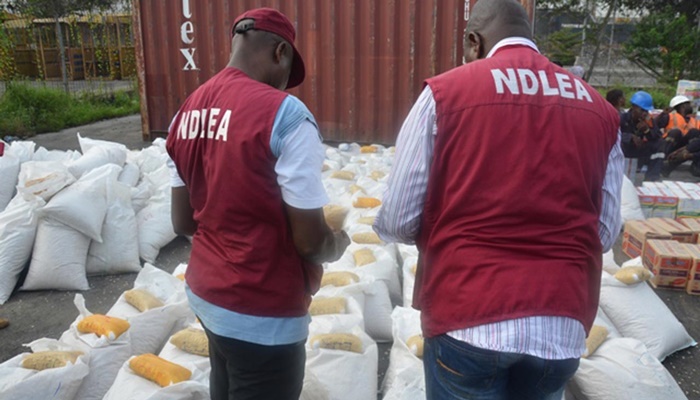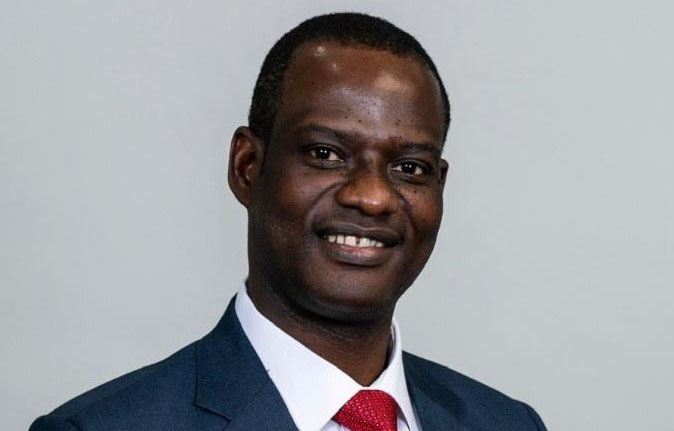
A report by the United States government on drug trafficking has said that Nigerian traffickers are leading globally.
In the comprehensive report released on Thursday the rate at which the illicit drugs are trafficked from the country had become worrisome to the international community.
According to the report, “Nigerian drug traffickers have strengthened partnerships with international cocaine and heroin distribution networks to procure and distribute significant quantities of drugs in the United States and other lucrative markets”.
The full report:
Illicit drug crops are grown, refined into illegal drugs, trafficked, and sold on the street by criminal enterprises that attempt to conceal every step of the process. Accurate estimates of such criminal activity are difficult to produce.
The estimates of illicit drug production presented in the INCSR represent the United States government’s best effort to assess the current dimensions of the international drug problem. They are based on agricultural surveys conducted with satellite imagery and scientific studies of crop yields and the likely efficiency of typical illicit refining labs. As we do every year, we publish these estimates with an important caveat: they are estimates. While we must express our estimates as numbers, these numbers should not be seen as precise figures.
Rather, they represent the midpoint of a band of statistical probability that gets wider as additional variables are introduced and as we move from cultivation to harvest to final refined drug.
As needed, the United States government revises its estimate process and occasionally the estimates themselves – in the light of field research and technological advancements. The clandestine, violent nature of the illegal drug trade makes field research difficult. Geography is also an impediment, as the harsh terrain on which many drugs are cultivated is not always easily accessible. This is particularly relevant given the tremendous geographic areas that must be covered and the difficulty of collecting reliable information over diverse and treacherous terrain.
Weather can affect our ability to gather data, particularly in the Andes, where cloud cover can be a major problem.
Improved technologies and analytical techniques may also lead us to produce revisions to United States government estimates of potential drug production. This is typical of annualized figures for most other areas of statistical tracking that must be revised year to year. When possible, we apply these new techniques to previous years’ data and adjust appropriately, but often, especially in the case of new technologies, we can only apply them prospectively. These illicit drug statistics represent the current state of the art. As new information and technology becomes applicable, the accuracy of the estimates will improve.
Cultivation Estimates
The Unites States government conserves limited personnel and technical resources by employing sample survey methodologies to estimate illicit crop cultivation and concentrating survey efforts on areas with strategic amounts of illegal cultivation or areas most likely to have illicit crop cultivation. Each year, analysts review a variety of datasets – including eradication data, seizure data, law enforcement investigations information, previous field locations, and other information – to determine areas likely to have illegal cultivation, and revise and update the search area, if necessary. They then survey and estimate cultivation in new areas using proven statistical techniques.
The resulting estimates meet the U.S. government’s need for an annual estimate of illicit crop cultivation for each country. They also help with eradication, interdiction, and other law enforcement operations. As part of the effort to provide accurate and comprehensive assessments, the areas surveyed are often expanded and modified, so direct comparison with previous year estimates is sometimes not possible.
Production Estimates
Illicit crop productivity depends upon a number of factors. Changes in weather, farming techniques, soil fertility, and disease prevalence can produce widely varying yields from year to year and place to place. Some illicit drug crop areas are not easily accessible to the U.S. government, which can make scientific information difficult to obtain. However, we continually strive to improve our drug production estimates.
The relative productivity of poppy crops in some cases can be estimated using imagery, and our confidence in coca leaf yield continues to improve as a result of field studies conducted in Latin America. Coca fields which are less than 18 months of age (“new fields”) produce much less leaf than mature fields. In Colombia, for example, fields on average get their first small harvest at six months of age; in Bolivia and Peru, fields are usually first harvested at 12 months of age. The U.S. government estimates include the proportion of new fields detected each year and adjust leaf production accordingly.
Processing Estimates
The wide variation in processing efficiency achieved by narcotics producers complicates the task of accurately assessing the quantity of cocaine or heroin that could be refined from a crop.
Differences in the origin and quality of the raw material and chemicals used, the technical processing method employed, the size and sophistication of laboratories, the skill and experience of local workers and chemists, and decisions made in response to enforcement pressures all affect production.
The U.S. government estimates for coca leaf, cocaine, marijuana, opium, and heroin production are potential estimates; that is, it is assumed that all of the coca, cannabis, and poppy grown is harvested and processed into illicit drugs. This is a reasonable assumption for coca leaf in Colombia. In Bolivia and Peru, however, the U.S. government potential cocaine production estimates do not remove for coca leaf locally chewed and used in products such as coca tea.
In Southwest and Southeast Asia and Latin America, it is not unrealistic to assume that virtually all poppy is harvested for opium gum, but substantial amounts of Asian opium are consumed or stored rather than being processed into heroin; the proportion of this opium ultimately processed into heroin is unknown.
Other International Estimates
The United States helps fund estimates done by the United Nations in some countries. These estimates use different methodologies from the U.S. government assessments and utilize a mix of imagery and ground-based observations. The UN estimates are often used to help determine the response of the international donor community to specific countries or regions.
There have been some efforts for the U.S. government and the UN to understand each other’s methodologies with the goal of improving both sets of estimates. These efforts are ongoing.
This report also includes data on drug production, trafficking, seizures, and consumption that come from host governments or non-governmental organizations. Such data is attributed to the source organization, especially when we cannot independently verify it.
Nigeria
Nigerian drug traffickers remain the preeminent international drug trafficking threat based in Africa. Nigerian trafficking networks operate in the United States as well as throughout Africa, South America, Europe, and Asia. Nigerian drug traffickers have strengthened partnerships with international cocaine and heroin distribution networks to procure and distribute significant quantities of drugs in the United States and other lucrative markets.
Nigeria is also experiencing an opioid epidemic. The most widely used opioid in Nigeria is tramadol, a pharmaceutical product originating mostly from India. Both legitimate Indian pharmaceutical companies and illicit clandestine labs mass-produce and ship tramadol and counterfeit tramadol tablets in 200, 225, and 250-milligram dosages for the Nigerian market.
Members of the Nigerian Customs Service (NCS) regularly interdict container loads of tramadol at Apapa Port in Lagos based on intelligence from the National Drug Law Enforcement Agency (NDLEA). The NCS declines to release the tramadol to NDLEA for destruction, and NDLEA reports that NCS officers frequently sell seized tramadol back to its original owners. Codeine is also widely abused, particularly by women in northern Nigeria.
Drug Control Accomplishments, Policies, and Trends
Institutional Development
During 2018, the NDLEA received a major boost in capacity following the complete refurbishment of the NDLEA Murtala Muhammed International Airport (MMIA) Command office building into a state-of-the-art complex, which is now the site of the newly formed Joint Border Task Force (JBTF). The $10 million JBTF project is mostly funded and overseen by the United Kingdom’s National Crime Agency (NCA). The JBTF is a multi-agency effort to target, interdict, disrupt, dismantle, and prosecute Nigerian-based transnational criminal organisations.
The task force, a joint endeavor supported by both the United States and the United Kingdom, is comprised of fully vetted and well-trained Nigerian law enforcement investigators. MMIA is viewed as the gateway for Nigerian criminal organisations involved in drug smuggling, as well as the movement of unlawful proceeds; human trafficking/smuggling; wildlife trafficking; weapons trafficking; and an array of other illegal cross-border activity. The NDLEA is the lead agency at the JBTF, contributing 140 officers and investigators who receive mentoring and investigative assistance from U.S. and UK law enforcement professionals embedded within the unit. The task force is further comprised of 20 investigative officers from the National Agency for the Prohibition of Trafficking of Persons (NAPTIP), as well as six prosecutors.
Supply Reduction
In 2018, the United States continued to assist in transitioning the NDLEA from a reactive agency to an intelligence-driven one through mentoring and investigative support. During the first eight months of 2018, the NDLEA reported the arrests of 4,736 individuals on drug trafficking charges (4,395 men and 341 women). The agency seized approximately 59 metric tons (MT) of cannabis; 119 kilograms (kg) of methamphetamine; 17 MT of tramadol; and approximately eight MT of codeine-infused cough syrup. The NDLEA reports that in 2018, the agency destroyed 267 MT of seized drugs overall.
In addition to these totals, the U.S.-supported NDLEA Sensitive Investigative Unit (SIU) is credited with seizing and destroying over 1,700 hectares of cannabis plantations; six-and-a-half MT of processed cannabis; four MT of tramadol; four kg of cocaine; and 250 kg of ephedrine.
The SIU seized properties and financial instruments approximately totaling $2 million and arrested 25 drug traffickers. Additionally, the SIU shared intelligence with counterparts in Benin and Japan that led to seizures of methamphetamine totaling 40 kg.
iii. Public Information, Prevention, and Treatment
Consumption of illicit and misused drugs within Nigeria is increasing alarmingly. The United Nations Office on Drugs and Crime (UNODC) has called on the government of Nigeria to address the growing abuse of pharmaceuticals by many Nigerian youths.
While cocaine is not readily accessible to the middle and lower classes, drugs such as codeine, rohypnol, and tramadol are accessible and available from street vendors on the streets of every city and town in Nigeria.
The NDLEA’s Demand Reduction Directorate nominally has programs that target youth, sex workers, community leaders, and transport workers. However, resources allocated for counseling and rehabilitation for substance use disorders are negligible.
iv Corruption
A large percentage of senior government officials are engaged, either directly or indirectly, in corrupt practices. In 2017 (the latest available data), the annual operating budget for the NDLEA was approximately $25,450,000. Salaries alone for the 5,001 NDLEA personnel were estimated at approximately $24,000,000, leaving the entire organisation to operate on a meager $1,450,000 per year. NDLEA is comprised of 42 commands that typically each receive approximately $2,800 per month to fund their operations, to include fuel for vehicles and generators, utilities, travel, and various investigative expenses. In 2018, NDLEA staff from various commands reported that no funds were dispersed. This failure at both the institutional and federal government levels encourages NDLEA staff to supplement their salaries and enforcement activities through the acceptance of bribes and extortion.
National Goals, Bilateral Cooperation, and U.S. Policy Initiatives The NDLEA’s primary national goals for 2018 were the passage of a Drug Sentencing Bill requesting a mandatory minimum five-year sentence for drug possession, and an increase of 15,000 personnel. The sentencing bill remained pending before the National Assembly at the conclusion of 2018, and although President Muhammmadu Buhari approved the agency’s request for an increase in personnel in 2017, funding had not been allocated to begin recruitment.
Conclusion
The NDLEA provides a framework for the Government of Nigeria to pursue its drug control objectives and cooperate with international partners to achieve these goals. To increase the agency’s effectiveness, the government of Nigeria will need to provide, and equitably distribute, increased funding and training to the NDLEA. The United States will continue to engage the Government of Nigeria to combat drug trafficking, corruption, money laundering, and other criminal issues. The institutional and societal factors that contribute to these criminal activities remain deeply rooted and will require a comprehensive and collaborative effort. Progress will require sustained Nigerian government efforts and an increased political will.






